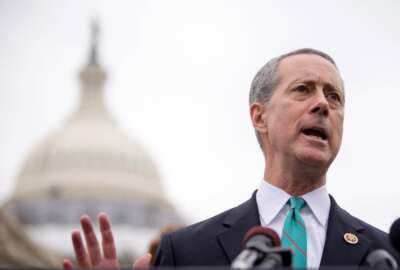
Bureaucrats: Clock-watchers, or workaholics?
Senior Correspondent Mike Causey says despite it being home to Congress, Washington, D.C. takes the least vacation time of any other major American city.
Just about every school kid in America knows that despite its small size (68.34 square miles), Washington, D.C. produces more hot air than the Sahara desert and is home base to a huge cadre of people who spend more money getting and keeping their jobs (that would be Congress) than the jobs actually pay. So how does that work again?
Speaking of work, Congress has got to be champ when it comes to taking time off. Its ever-increasing breaks and failure to take care of business are the primary reasons for the costly and disruptive government shutdowns during the Clinton, Bush and Obama administrations, which made D.C. look even worse.
The D.C. metro area (including big chunks of Maryland, Virginia and a piece of West Virginia) is also home to the largest concentration of federal workers in the U.S. And feds, we are often told, are overpaid, underworked clock-watchers who can’t be fired and who have the best vacation package (aside from the House and Senate, of course) in the nation. Except…
According to a new report by Project: Time Off, workers in D.C. take LESS vacation time off than people in any other large city. San Francisco is next, followed by Los Angeles, Tampa, Boston, Denver, Riverside-San Bernardino, Portland, Oregon, San Antonio and Las Vegas. Cities with the least unused vacation are Pittsburgh; Chicago; Phoenix; Orlando; Miami, Kansas City, Missouri, Charlotte, Atlanta, San Diego and Detroit.
The study showed that 54 percent of American workers did not use all of their vacation time last year. It said they left 662 million days unused. Most often cited reasons: Workload or the cost of a vacation. While that saved employers money, the report said that if people had taken the time owed them, it would have pumped $128 billion in direct spending into the economy.
So why would D.C., headquarters of most federal operations, show up on the list of cities where workers take the least vacation (annual leave in fedspeak) time? The study was much larger than most surveys, which frequently quiz 1,000 or fewer people. This one involved 7,331 American workers 18 and older who worked at least 35 hours per week. On a state-by-state basis, it showed that Maine led the nation with the least unused vacation followed by Hawaii, Arizona, Alabama, Wisconsin, Arkansas, Pennsylvania, Michigan, Tennessee and Louisiana. How come? Union vs. right-to-work-states? Educational levels? Types of jobs? Who knows?
What surprised lots of people is that D.C., which is at the bottom of most people’s most-admired jurisdictions, leaves so much vacation unused. The study noted that D.C. is chock-full of feds compared to other cities and that government workers “are more likely to leave vacation time unused” (63 percent). Partly, it noted, that’s because of the government’s generous (compared to most places) policy allowing workers to carry over leave from one year to the next. And getting paid for unused annual leave in a lump-sum payment when they retire. Most companies don’t do that. Some don’t offer any vacation. Others have use-it-or-lose-it rules.
As an unscientific study, I called 10 current and retired feds. All but one of the workers said they had taken less leave last year than they were due. Several cited pressure of work, projects, etc. Two said taking a vacation “wasn’t worth it” because of what they faced or would have faced when they return. Two of the retirees said they took a week or two per year (although allowed more) but as they got older, they realized the “mental health value” of time away from work.
As somebody just back from vacation, I feel out of it, but in a good way. What’s your story? Do you take all your vacation? Are you saving it to cash in at retirement? Do you think people who never or seldom take vacations are hard-driving patriots? Or losers on the burn-out trail? Let us know how things are where you work: mcausey@federalnewsradio.com
Check out the entire survey here.
Nearly Useless Factoid
More than 4.2 million people flew from Chicago to New York between February 2015 and January 2016, making it the most-traveled domestic air route that year.
Source: Statista
Copyright © 2025 Federal News Network. All rights reserved. This website is not intended for users located within the European Economic Area.
Mike Causey is senior correspondent for Federal News Network and writes his daily Federal Report column on federal employees’ pay, benefits and retirement.
Follow @mcauseyWFED





